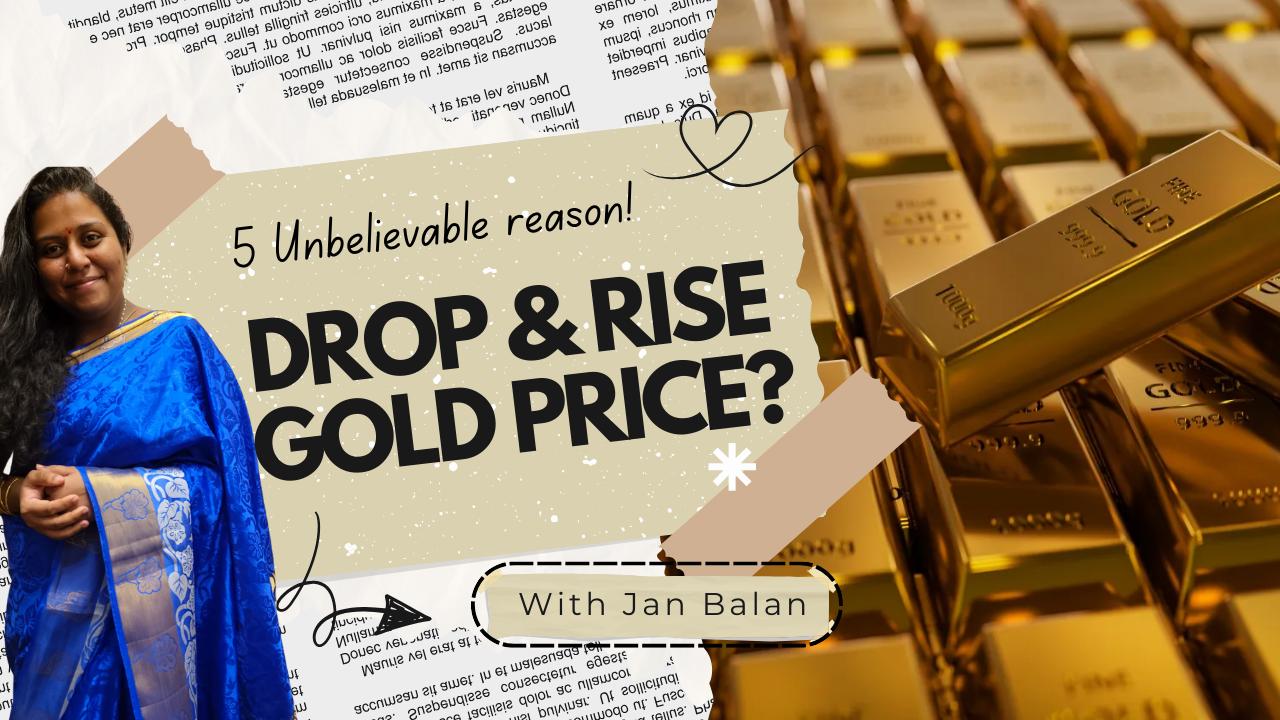Why Do Gold Price Drop and Rise? They flacuate so often, What factors drive these ups and downs?
Imagine this: It’s Diwali season, and Kavya, a young professional in Chennai, is excited to buy her first piece of gold. She’s been saving for months, and she can’t wait to get her hands on a beautiful gold pendant she’s been eyeing. But just before she goes to the store, she hears news that gold prices have shot up again. Frustrated and confused, she wonders, Why does this always happen? Why can’t gold prices just stay the same? Kavya’s experience isn’t unique—most of us have seen gold prices rise and fall without fully understanding why. Let’s dive into some reasons behind these changes and what causes this rollercoaster.
The Global Economy’s Role in Gold Prices
First, the state of the global economy has a massive impact. Gold has long been seen as a safe haven, meaning when there’s economic trouble, people tend to invest in gold to protect their wealth. During times of uncertainty—like financial crises or political instability—more people buy gold. The increase in demand drives prices up.
On the other hand, when the global economy is stable and markets are doing well, people feel more confident investing in stocks or other assets. This reduces demand for gold, which can lead to a price drop. In simple terms:
- Unstable Economy → More Gold Demand → Higher Prices
- Stable Economy → Less Gold Demand → Lower Prices
The Power of the U.S. Dollar
Gold is usually traded in U.S. dollars globally, so the value of the dollar directly affects gold prices. When the dollar is weak, gold becomes cheaper for people buying with other currencies, boosting demand and raising prices. But when the dollar is strong, gold becomes more expensive for international buyers, often leading to a dip in demand.
Here’s how it works:
- Weak Dollar → Cheaper Gold for Others → Price Increase
- Strong Dollar → Expensive Gold for Others → Price Decrease

The Influence of the Indian Rupee
For Kavya and many others in India, the strength of the Rupee matters. When the Rupee weakens against the dollar, gold becomes more costly for Indians, causing prices to rise. A stronger Rupee, on the other hand, can make gold a bit more affordable locally.
- Weaker Rupee → Expensive Gold in India
- Stronger Rupee → Cheaper Gold in India
Festivals, Weddings, and Demand
Now, there’s another side that’s close to Kavya’s heart: festivals and weddings. In India, gold is almost a cultural necessity for celebrations, particularly during festivals like Diwali and the wedding season. This seasonal demand drives prices up, as families rush to buy gold for auspicious occasions. When the season ends, demand slows, and so do prices.
- Festival/Wedding Season → Higher Demand → Price Increase
- Off-Season → Lower Demand → Price Decrease
A Balancing Act
So, what’s really driving gold prices? It’s a constant balancing act. Global economics, the strength of the dollar and the Rupee, and local demand create a dynamic environment where gold prices are always adjusting.
As Kavya steps out of the jewelry store, she now understands that these changes are not random. They’re shaped by forces around the world and at home. And though gold prices may go up and down, her investment will likely remain valuable, reflecting the timeless allure of gold in uncertain times.
Subscribe to our email newsletter to get the latest posts delivered right to your email.

Comments